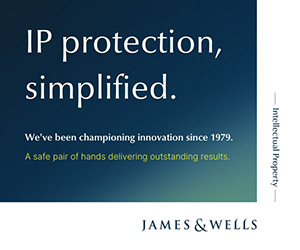In my last article I wrote about the importance of doing thorough due diligence on any business or asset acquisition. I recommended drawing up a list of due diligence issues, including identifying and verifying ownership of all intellectual property (IP) assets.
With this article I explore a related issue – the risk of IP rights being bona vacantia after a business’s assets have been sold. Bona vacantia is Latin and means “unclaimed goods”.
More broadly, it means unclaimed property. “Property” includes intangible assets like trade marks, patents, copyright, trade secrets and designs.*
The issue of IP assets being bona vacantia most commonly arises in relation to registered IP rights.
When does bona vacantia apply?
Property owned by a company (limited or unlimited) is deemed to be bona vacantia if, immediately before the company is removed from the New Zealand Companies Register (the “Register”), the property has not been distributed or disclaimed by the company. (In the context of IP rights, “distributed” means assigned by way of deed or otherwise in writing to a new owner; “disclaimed” means withdrawn, cancelled or surrendered.)
On removal of the company from the Register, ownership rights in the property vest in – pass to – the Crown.
The Crown takes ownership of the property because the company no longer exists as a legal person and under New Zealand law the property must be owned by someone – it cannot remain ownerless.
By way of example, if ABC Limited owns a registered trade mark, but does not assign or cancel the registration before the company is removed from the Register, the Crown will become the owner of that registration on removal of the company from the Register.
Similarly, if XYZ New Zealand (an unlimited company) owns a granted patent, but does not assign or surrender the patent before the company is removed from the Register, the Crown will become the owner of that patent on removal of the company from the Register.
Can you get your property back?
If property does vest in the Crown, all is not lost. Property can be recovered by a person “who would have been entitled to receive all or part of the property, or payment from the proceeds of its realisation, if it had been in the hands of the company immediately before the removal of the company from the New Zealand register”.
The recovery process is not a simple one, however, and may involve restoring a company to the Register. (I say “may” because for registered trade marks at least, entitled persons can pursue a private process directly with the Treasury, which does not involve restoring the company to the Register.)
If the company is restored to the Register, then, subject to certain exceptions, any property vested in the Crown re-vests in the company as if the company had not been removed from the Register.
This ‘restoration without interruption of right’ can be pivotal in retaining and enforcing IP rights – as a trade mark owner in England found out recently.
In Fit Kitchen Ltd & Anor v Scratch Meals Ltd,** the plaintiff, Fit Kitchen Limited (“FKL”) successfully sued the defendant, Scratch Meals Limited (“SML”), for trade mark infringement and passing off. A key feature of the case was whether the trade mark relied on by FKL was valid.
FKL applied to register its FIT KITCHEN logo trade mark (“Trade Mark”) on 8 August 2016.
Unbeknownst to its director at the time, the application was made six days after FKL had been removed from the UK’s Companies Register for failing to file its annual accounts. The failure was due to an address mix-up.
On discovering the company had been removed, FKL’s director applied to restore the company to the Register; the company was duly restored on 11 December 2017.
In December 2016, while FKL was not on the Companies Register, however, SML began using a similar FIT KITCHEN logo mark; it did so until November 2019.
- In infringement proceedings brought by FKL in the Intellectual Property Enterprise Court, SML argued, among other things, that FKL’s trade mark registration was invalid because on the date FKL applied to register its trade mark it was a dissolved company, and a dissolved company cannot apply for a trade mark. Much to FKL’s relief, the Court disagreed. Applying very similar law to that in New Zealand, the Court found that as FKL was deemed to have continued in existence at all times, including on 8 August, 2016, the trade mark application was properly made by FKL and the Trade Mark belonged to FKL.
Take homes
To avoid a significant headache, all companies with IP assets should ensure:
- The company’s details on the Companies Register are correct;
- The company keeps a detailed register of all its IP assets, whether registered/granted or not;
- The company’s contact details for any IP assets on the Intellectual Property Office of New Zealand database (and any other databases, including domain name registrars) are correct;
- If the company has an IP agent, the agent has up-to-date contact details for the company; and
- If the directors and shareholders of the company intend to wind the company up, then in preparation for removal from the Companies Register, all IP assets are assigned in the proper fashion to a new owner/new owners before removal.
If any readers of this article require specific advice, or know someone who does, then contact James & Wells or your nominated IP attorney. Don’t leave it until it is too late.
• References:
* See the definition of “property” in section 2 of the Companies Act 1993.
** [2020] EWHC 2069 (IPEC).


















